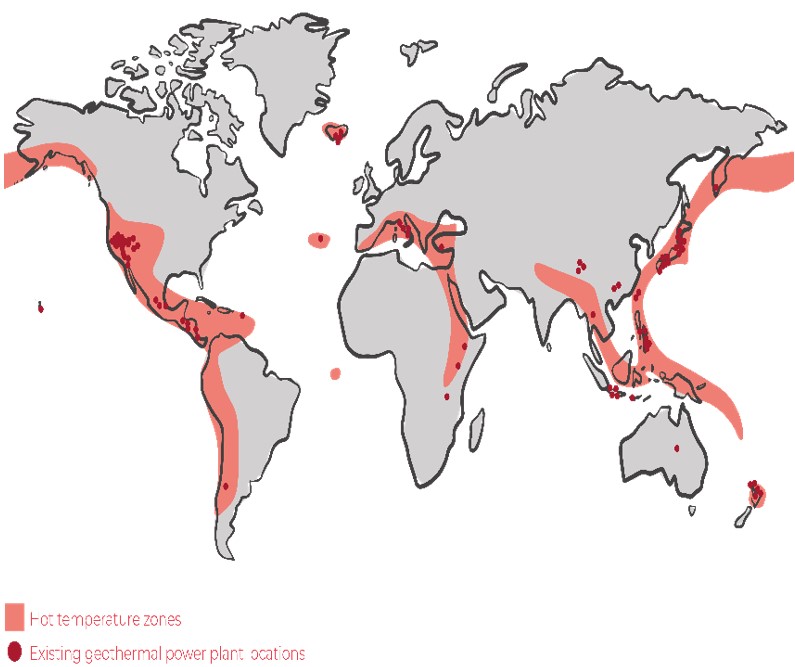- Definition and Types of Energy
- Myths And Misconceptions About Energy
- The Relationship Between Energy and Environment
- Climate Change and Carbon Footprint
- Greenhouse Gas Effect
- The Role of Human-Induced Greenhouse Gases and Energy Consumption
- Energy Efficiency and Sustainability
- Renewable Energy Sources and Future Perspectives
- Play and Learn
- Solar Energy Conversions
- Solar Energy Worldwide
- Solar Energy in Partner Countries
- Positive and Negative Impacts
- Technologies for Harnessing Solar Energy
- Solar thermal energy technologies and applications
- Electricity Generation Methods
- Passive Heating and Cooling of Residences with the Sun
- Concentrator solar power (CSP) systems and electricity generation
- Systems and Applications That Generate Electricity directly from solar rays
- Photovoltaic Cells and Panels
- Domestic PV Systems
- Off-Grid PV Systems
- Hybrid Connected Systems
- Materials Used in PV Cells
- Play and Learn
Geothermal Energy in the World
There are many geothermal areas around the world and these areas are called geothermal zones. Geothermal zones are generally located in areas where tectonic movements are intense and volcanic activity is seen. The most important geothermal zones are:

- Andean Volcanic Belt: Argentina, Chile, Bolivia, Peru, Ecuador, Colombia and Venezuela
- Alpine-Himalayan Belt: Thailand, Burma, China, Tibet, India, Pakistan, Iran, Turkey, Greece, Yugoslavia and Italy
- East African Rift System: Djibouti, Ethiopia, Kenya, Uganda, Tanzania, Malawi and Zambia
- Central American Volcanic Belt: Panama, Costa Rica, Nicaragua, El Salvador and Guatemala
Geothermal energy has been used since the earliest ages of human history. During the ancient Roman period, geothermal resources were used in baths and heating systems. The first use of geothermal energy in electricity production took place in Italy in 1904. The world's first commercial geothermal power plant was established in Italy in 1911. After a long time, the second industrial geothermal power plant was put into operation in New Zealand in 1958.
From the 1950s to the 2000s, electricity production from geothermal energy increased by 17% and thermal (heating) use by 87%. Today, the evaluation of geothermal energy resources is becoming increasingly widespread and many countries are trying to use this clean and renewable energy source more effectively.
As of 2024, the global geothermal energy production capacity has reached a total of 16,873 MW. This capacity was achieved with the contribution of 35 countries. With the commissioning of 14 new facilities and expansion of existing capacities during the year, a total increase of 389 MW was achieved. The top 10 countries in terms of installed geothermal energy capacity were recorded as the United States (3,937 MW), Indonesia (2,653 MW), Philippines (1,984 MW), Turkey (1,734 MW), New Zealand (1,207 MW), Kenya (985 MW), Mexico (976 MW), Italy (944 MW), Iceland (755 MW) and Japan (740 MW).